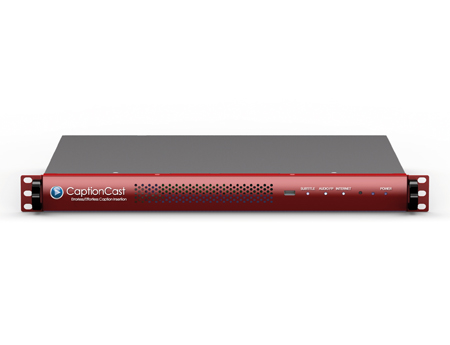Automation: Operative Word in Caption Tech

Although all the major broadcasters and programmers have already put in place systems to comply with FCC rules for online captioning, the enormity of the task continues to pose a number of challenges, prompting the creation of several technical advances in captioning systems.
It’s a necessary step, given the complexity of the issue. Turner, for example, must monitor closed captions for 29 network feeds and provide captioned content to more than 100 websites and applications. “In addition to the live broadcast feeds, it adds up to millions of files a month,” says Drew Lanham, senior VP/GM of media and entertainment at Nexidia, which provides technologies for automating the process at Turner and other clients. “It is not something you can do manually.”
Failure to properly place captions can also have important financial repercussions. “Incorrect captions and caption placements is causing quite a few files to be rejected by iTunes,” and other over-the-top players, which can increase costs and delay potential revenue from digital media, explains Darren Forster, director of product management for master control, branding and subtitling at Grass Valley.
Buying Into Accessibility
That has prompted some notable investments in captioning technologies in the last 15 months and a number of alliances between vendors so they can offer more integrated products.
Prior to its merger with Grass Valley, Miranda acquired Softel in early 2013, which led to the captioning technology being integrated into the iTX playout system, Forester says.
Likewise, in August 2013, Telestream acquired software company Computer Prompting and Captioning (CPC). This has allowed it to streamline the process of checking and fixing captions by integrating the CPC system into the Telestream Vantage offering, says Giovanni Galvez, a closed captioning expert and member of the caption team at Telestream.
Broadcasting & Cable Newsletter
The smarter way to stay on top of broadcasting and cable industry. Sign up below
In addition, AmberFin is now making the Nexidia QC system for automatically checking captions available as part of AmberFin Unified Quality Control Server. “There is tremendous interest in automating those processes as the number of platforms grows,” says Bruce Devlin, CTO of AmberFin, a Dalet company.
One major area of focus is the very fragmented consumer electronics landscape, where different devices use different operating systems, players and other technologies that handle captions in different ways. “Folks are continuing to look for more simplicity in handling the content,” says Chris Knowlton, VP and streaming industry evangelist at Wowza, which has also recently announced a number of improvements in the way its streaming media technologies handle captions.
Cloud-based systems are also being deployed to help simplify that process. At the recent NAB Show, i-Yuno introduced a cloudbased system for captioning called Caption- Cast that streamlines broadcast and digital captioning. “Once that process is completed they can forget about captioning in all of their other windows, including over-the-top delivery,” company president David Lee says.
Another major area of focus is archived content, which now needs to be captioned before it can be put on digital platforms. “It is very difficult to check if files are captioned properly because there are so many formats and files in their archives,” says Galvez at Telestream, which has developed a soon-to-be-released video player to help solve that problem.
SOUNDS SOLUTIONS FOR CAPTIONING ISSUES
Creation/development expenditures are bound to be a factor when it comes to advancing captioning technology. To help keep costs down, news and automation software company Comprompter introduced a Caption Central system that uses voice-activated technologies to improve quality and reduce the cost of captioning. The system captions much of the program from the scripts in newsroom systems and uses voice recognition systems to handle parts of the newscast, such as weather, sports or cross talk, that aren’t typically scripted. “Smaller stations can’t afford the high cost of providing captioning,” says company CEO Ralph King, who adds the technology’s accuracy rate is 90%-95% for voices the system has been trained to recognize.
Regarding captions for non-live content, David Lee, president of i-Yuno, noted the company recently rolled out a cloud-based distributed captioning system called Directcaption.com that allows transcribers to handle short bits of content from mobile devices.
